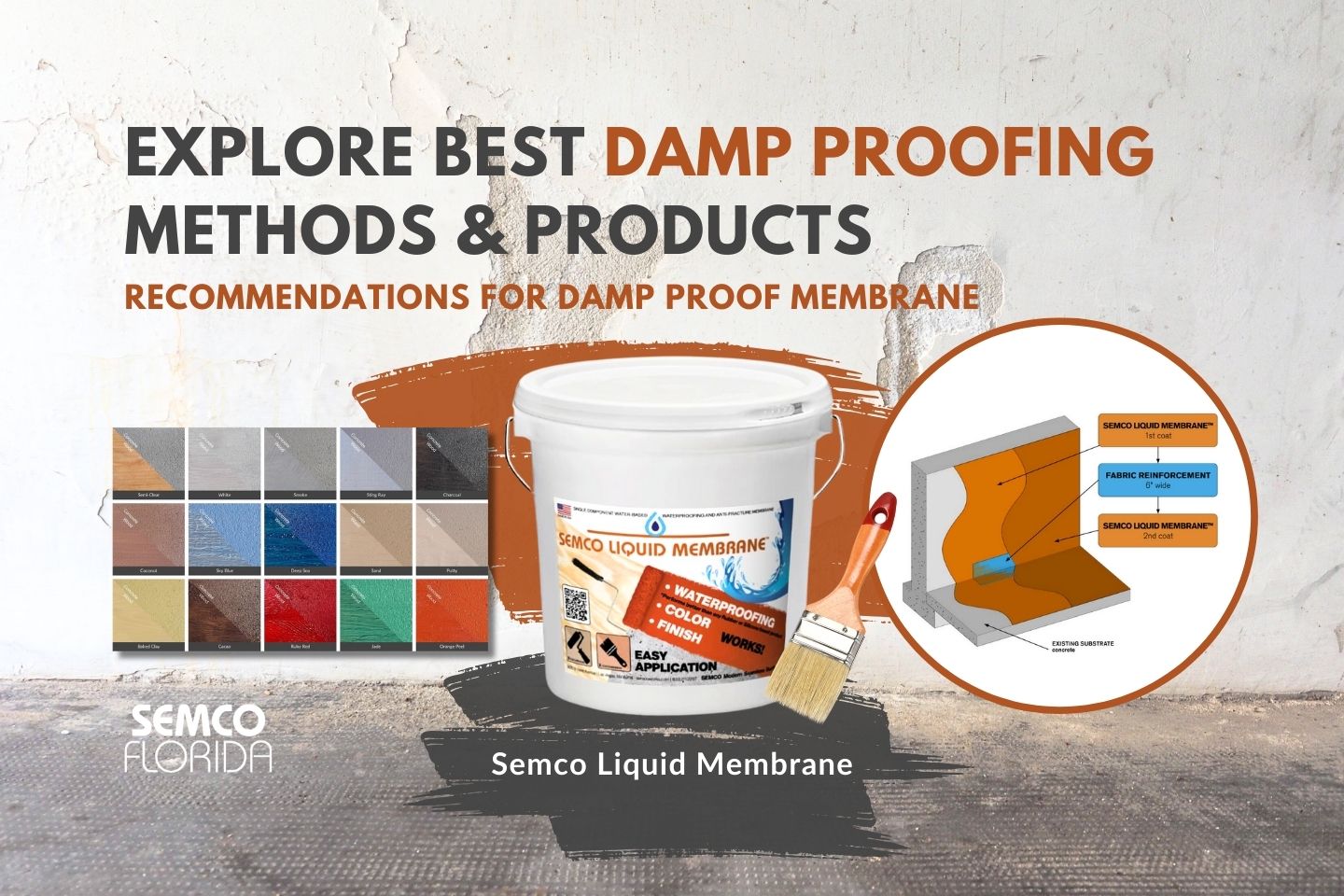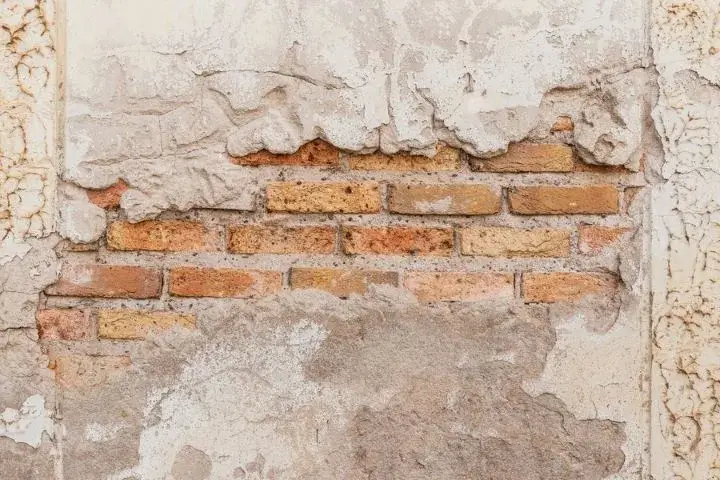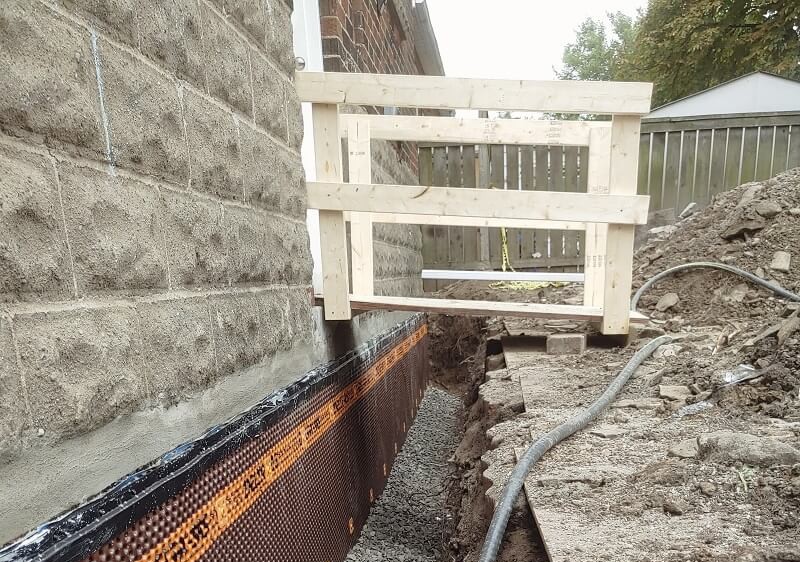Discovering the Numerous Strategies and Solutions for Effective Damp Proofing
Wetness in structures poses substantial difficulties to both structural integrity and indoor air quality. Various techniques and remedies have actually emerged to battle this prevalent issue. From traditional damp-proof membrane layers to innovative chemical treatments, each technique offers one-of-a-kind advantages. Understanding these options is crucial for effective moisture control. Choosing the appropriate option depends on certain building conditions and requirements, triggering more expedition into the most reliable damp proofing approaches readily available.
Understanding the Root Causes Of Dampness
Although dampness can emerge from different resources, understanding these causes is important for reliable removal. Commonly, moisture originates from 3 primary sources: increasing damp, passing through wet, and condensation. Rising damp takes place when groundwater takes a trip up through porous products, such as block or rock, often due to a lack of an efficient barrier (damp proofing newcastle). Penetrating moist is usually triggered by outside elements, consisting of roofing system leakages, malfunctioning gutters, or harmed wall surfaces, enabling water to penetrate a property. Condensation, on the other hand, results from excess dampness in the air, commonly intensified by bad air flow and temperature differences, bring about water beads basing on surfaces. Determining these underlying problems is important, as each type of wetness calls for a tailored technique for remediation. Correct assessment helps in establishing one of the most effective options, eventually securing the structural stability of a building and enhancing indoor air top quality
Traditional Damp-Proof Membranes

Chemical Damp-Proofing Solutions
Chemical damp-proofing options supply a cutting-edge method to stop moisture breach in structures. These approaches commonly include the application of fluid chemicals that pass through stonework and form an obstacle against climbing damp. Generally utilized chemicals include silanes, siloxanes, and other water-repellent representatives that respond with surface materials to create a hydrophobic layer.The application procedure typically calls for exploration openings into the wall surfaces, injecting the chemical service, and enabling it to treat. This approach is especially beneficial for older structures where typical damp-proof membrane layers might be impractical. Chemical damp-proofing can be less disruptive and a lot more cost-efficient than considerable renovation projects.While effective, these options depend on appropriate application and environmental problems for peak performance. mould treatment newcastle. Regular upkeep and monitoring are important to ensure the longevity of the damp-proofing therapy. In general, chemical damp-proofing represents a versatile alternative for guarding buildings against moisture-related damages
Cavity Wall Surface Construction Strategies
Cavity wall building and construction strategies supply various advantages, especially in moisture control and power efficiency. By integrating an air space between two layers of stonework, these wall surfaces efficiently mitigate water ingress while boosting insulation. This combination not just shields structures from wetness but also adds to decreased energy usage.
Benefits of Cavity Walls
When taking into consideration efficient wet proofing methods, the advantages of dental caries wall surfaces stand out prominently. Tooth cavity wall surfaces contain two separate layers, producing an air space that properly reduces dampness infiltration. This style decreases the danger of dampness, as the outer wall serves as a barrier against rainfall and water ingress. Furthermore, tooth cavity walls improve thermal insulation, which adds to energy efficiency by lowering warmth loss. They additionally offer audio insulation, helping to create a quieter indoor atmosphere. Moreover, the air space permits air flow, which assists in wetness control and minimizes the likelihood of mold growth. These advantages not only enhance the overall convenience of a structure however additionally add to its long life and architectural honesty.
Dampness Control Methods
Reliable wetness control approaches are essential in tooth cavity wall surface building and construction to guarantee long-term protection against wetness. One key method includes the incorporation of weep openings, which promote water drain from the tooth cavity, protecting against buildup. In addition, the use of breathable membrane layers can assist manage wetness levels while permitting trapped vapor to escape. Proper placement of insulation is additionally critical, as it must not block drain paths. Guaranteeing that the outer fallen leaves of the cavity wall surface are constructed with water-resistant products enhances general resilience. Routine upkeep checks are essential to identify any kind of obstructions or damage early, protecting the structure's integrity. Ultimately, a combination of these strategies develops a robust defense versus wetness breach in cavity wall surfaces.
Insulation and Power Efficiency
Insulation plays a crucial function in boosting power efficiency within cavity wall construction. By incorporating shielding products, these walls develop a thermal barrier that lessens heat loss and reduces energy usage. Reliable insulation not just aids keep a secure indoor temperature yet additionally reduces the danger of wetness, as it prevents condensation within the wall surface dental caries. Numerous techniques, such as using rigid foam boards or mineral wool, can be used to achieve optimal insulation efficiency. In addition, appropriate installation is essential to assure that gaps and voids are minimized, which can or else jeopardize power efficiency. Eventually, a well-insulated dental caries wall contributes considerably to overall sustainability and decreases heating & cooling prices for homeowners.
External Damp Proofing Techniques
Outside wet proofing methods are vital for shielding frameworks from wetness seepage. Two effective methods consist of the application of waterproof membranes and the setup of French drains. These remedies aid reduce water buildup and maintain the integrity of structures.
Waterproof Membrane Application
While different approaches exist for avoiding wetness ingress, the application of water-proof membranes continues to be a highly reliable outside moist proofing method. These membrane layers are normally made from products such as polyethylene, rubber, or modified asphalt, providing a durable obstacle versus water infiltration. The installment procedure entails using the membrane layer to the outside surface areas of wall surfaces or structures, ensuring total protection to avoid leaks. Appropriate adhesion and sealing at joints are critical to making the most of performance. Water resistant membrane layers can be used in different types, consisting of liquid finishes and sheet membrane layers, permitting flexibility based upon the specific demands of the framework. This approach not just safeguards structures from wetness however also improves their longevity and structural integrity.
French Drain Installment
One reliable technique for managing groundwater and avoiding moisture buildup around a building's structure is the installation of a French drainpipe. This water drainage system is composed of a trench loaded with crushed rock and a perforated pipe that reroutes surface water far from the foundation. Proper installation needs mindful planning, making sure that the drain slopes away from the structure to assist in excellent water flow. Additionally, the area of the drainpipe is vital; it ought to be placed in areas susceptible to merging or excess moisture. Normal maintenance, including clearing up particles from the crushed rock and guaranteeing the pipe remains unobstructed, is crucial for long-term efficiency. Ultimately, a well-installed French drain can significantly lower the risk of water-related problems in basements and foundations.
Interior Waterproofing Approaches
Interior waterproofing techniques are crucial for protecting a structure's interior from dampness seepage and prospective water damages. These strategies usually include the application of customized products and strategies developed to develop a moisture obstacle within the framework. One typical approach is making use of water resistant coatings or sealants on wall surfaces and floorings, which avoid wetness from passing through surfaces.Additionally, installing indoor drain systems, such as sump pumps, can successfully manage water buildup in basements and crawl areas. One more approach entails using vapor obstacles, which are mounted to inhibit dampness motion from the ground right into living spaces.Moreover, resolving any splits or voids in wall surfaces or foundations with ideal sealants assures a complete protection versus water intrusion. By implementing these interior waterproofing approaches, building owners can greatly decrease the risk of mold growth, structural damage, and various other moisture-related read more issues. Appropriate execution of these methods is essential for long-term protection and structure honesty.
Routine Maintenance and Inspection Practices
Regular maintenance and inspection practices are vital for ensuring the lasting effectiveness of moist proofing remedies in any type of structure. Routine checks enable homeowner to recognize very early signs of wetness breach, such as peeling paint, mold and mildew growth, and moldy smells. These indications can indicate underlying issues that need instant attention.Inspections ought to be performed a minimum of every year, focusing on vulnerable locations like basements, creep areas, and outside walls. Throughout these assessments, home proprietors should analyze sealants, drainage systems, and air flow to verify they function correctly.Additionally, keeping seamless gutters and downspouts is crucial, as clogged systems can cause water accumulation near the structure. Executing a routine upkeep timetable, in addition to prompt repair services, can substantially extend the lifespan of moist proofing procedures and safeguard the architectural stability of the structure. Positive actions eventually add to the total health and wellness of the living environment.
Often Asked Questions
For How Long Does Damp Proofing Generally Last?
The duration of damp proofing efficiency differs, generally lasting in between 20 to half a century. Variables such as application quality, environmental problems, and upkeep methods significantly influence the durability of the wet proofing therapy.

Can I Damp Evidence My Home Myself?
The private contemplated the expediency of do it yourself damp proofing. With proper research study and the best products, it is feasible. Nevertheless, they additionally identified the importance of professional advice to guarantee durable performance and stop future issues.
What Are the Indications of Ineffective Damp Proofing?
Signs of ineffective wet proofing include relentless stuffy odors, visible mold development, peeling off paint, wet patches on wall surfaces, and wood decay - mould removal newcastle. Property owners need to address these problems quickly to avoid more damage and wellness problems
Does Damp Proofing Affect Indoor Air High Quality?

Just How Much Does Professional Damp Proofing Expense?
Professional moist proofing expenses vary significantly, generally varying from $1,000 to $5,000 relying on the property's size, the degree of the damp concern, and picked techniques. Each situation needs a tailored evaluation for precise prices. Generally, wetness originates from three primary resources: climbing wet, passing through wet, and condensation. When considering effective moist proofing approaches, the advantages of cavity walls stand out prominently. Exterior damp proofing methods are necessary for securing structures from moisture infiltration. While different approaches exist for preventing dampness access, the application of water resistant membranes continues to be an extremely reliable external wet proofing method. Signs of ineffective wet proofing consist of persistent musty smells, visible mold and mildew growth, peeling off paint, damp spots on walls, and wood decay.